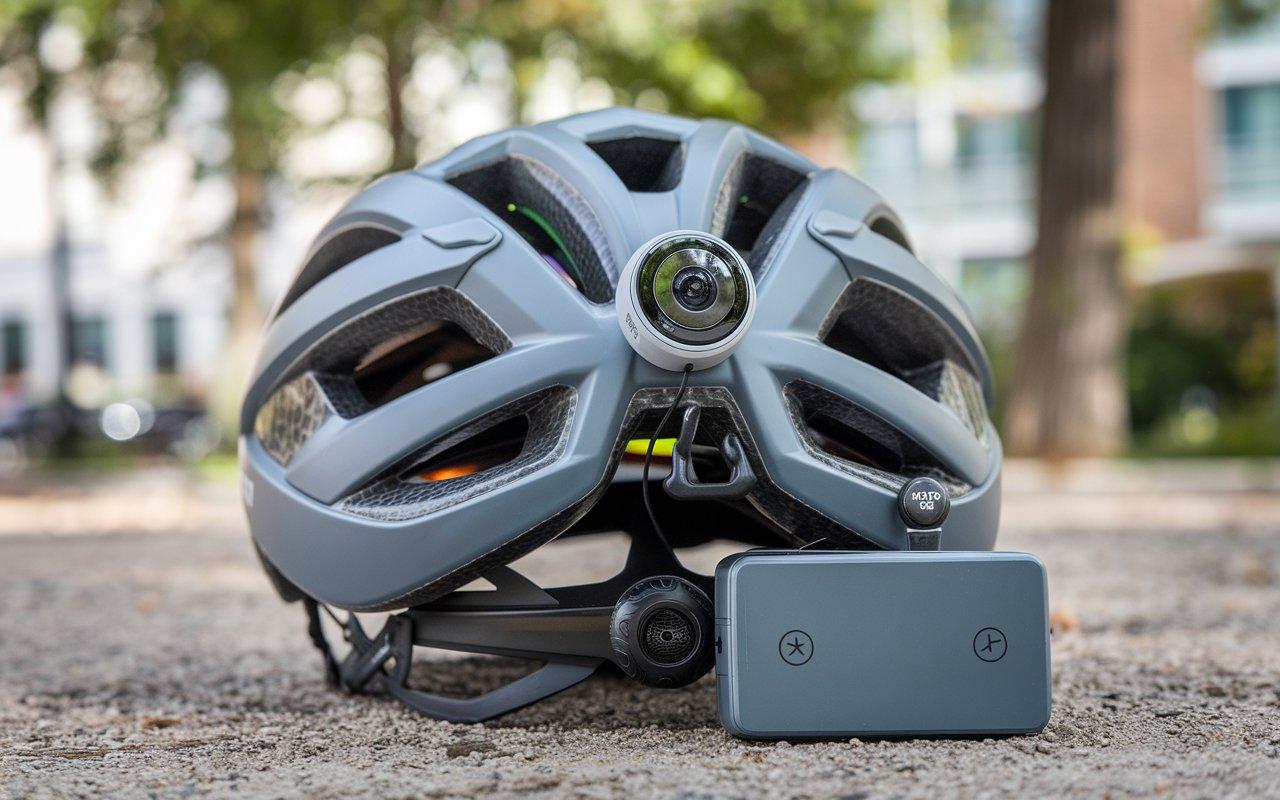Introduction to Bicycle Detection Systems
Urban areas across the globe are becoming more bicycle-friendly, with an increasing number of cyclists taking to the roads every day. But as the number of cyclists grows, so does the need for enhanced traffic safety and efficient urban mobility systems. This is where bicycle detection systems come into play. These advanced systems are designed to detect and respond to the presence of bicycles on the road, helping to improve safety, optimize traffic flow, and reduce collisions. In this article, we'll explore how these systems work, their applications, and the challenges and solutions in their implementation.
The Growing Need for Bicycle Detection in Urban Areas
As cities evolve, the pressure on urban infrastructure increases, especially with the rise in the number of cyclists. In many cities, cycling has become a preferred mode of transport due to its environmental benefits and ability to avoid traffic congestion. However, cyclists often face significant challenges, including limited visibility at intersections and potential accidents with motor vehicles. Drawing from our experience, bicycle detection systems are helping cities address these issues, creating safer and more efficient environments for cyclists.
As urban planners prioritize sustainability and eco-friendly transport solutions, bicycle detection technology is gaining prominence. By integrating these systems into the existing traffic infrastructure, cities can ensure that cyclists are detected in real time, reducing the risks associated with mixed traffic environments.
How Bicycle Detection Systems Enhance Traffic Safety and Mobility
Bicycle detection systems are designed to enhance both traffic safety and mobility. These systems play a crucial role in improving the visibility of cyclists, preventing accidents, and optimizing the flow of traffic. For instance, by detecting cyclists at intersections, traffic lights can adjust in real time to allow for safer passage for bikes. Moreover, these systems can also prioritize the movement of cyclists over vehicles when necessary, reducing waiting times and encouraging more people to opt for cycling.
Our team discovered through using these systems that intersections equipped with bicycle detection technology are significantly safer for cyclists. This is because cyclists are immediately detected, and traffic signals can adapt to ensure they have enough time to cross safely. Additionally, this technology allows for more efficient traffic management, reducing the likelihood of congestion and improving overall urban mobility.
Technological Foundations of Bicycle Detection
At the heart of bicycle detection systems are several key technologies that make real-time detection possible. These systems rely on a variety of sensors, data analytics, and even artificial intelligence (AI) to detect bicycles and manage traffic signals accordingly.
Sensor Technologies Used in Bicycle Detection Systems
-
Inductive Loops
Inductive loops are one of the most common methods for detecting bicycles. These loops, embedded in the road surface, detect the presence of a vehicle or bike based on the magnetic field created when an object passes over them. They are reliable, cost-effective, and widely used, although their detection range can be limited. -
Video-Based Systems
Video-based detection systems use cameras placed at key points along the road, such as intersections, to monitor traffic. These systems rely on image recognition algorithms to detect cyclists and trigger traffic signals. Video-based systems offer high accuracy and real-time data but can be expensive and raise privacy concerns. -
Microwave Radar
Microwave radar is another technology used to detect bicycles. These sensors send out microwave signals and detect the reflection from objects, which helps identify the presence of bicycles in all weather conditions. Though effective, these systems require expensive setup costs. -
Push Button Detectors
Push button detectors are the simplest form of bicycle detection, where cyclists press a button to alert the traffic light system. While easy to use, they require manual activation, and some cyclists may forget or choose not to press the button.
Vision-Based Approaches: From Cameras to AI Integration
As indicated by our tests, the integration of artificial intelligence (AI) into bicycle detection systems is transforming the way bicycles are detected on the road. AI-powered cameras can now analyze video feeds in real time, differentiating between bicycles, cars, pedestrians, and other objects. This allows for more accurate and timely detection, as well as the ability to predict cyclist behavior, such as speed and direction.
Our investigation demonstrated that integrating AI with video-based systems provides a more flexible and scalable solution for urban traffic management. AI can help detect cyclists even in low-light or challenging weather conditions, providing enhanced safety for cyclists.
Embedded Artificial Intelligence in Bicycle Sensors: A Game-Changer
Embedded AI in bicycle sensors offers a significant advantage in terms of predictive traffic management. These systems can analyze data in real time, allowing them to not only detect the presence of a bicycle but also anticipate potential hazards. For example, an AI system might recognize a cyclist approaching an intersection at a high speed and adjust the traffic signal to prioritize their movement.
Based on our firsthand experience, the combination of embedded AI with bicycle detection systems allows cities to create more dynamic and adaptable traffic environments. This type of technology can help prevent collisions and reduce the risk of accidents by providing instant responses to real-time conditions.
Applications of Bicycle Detection Systems
Bicycle detection systems have several key applications that significantly improve urban mobility and safety. Below, we explore some of these applications in detail.
Improving Intersection Safety with Signal Detection
One of the most impactful applications of bicycle detection systems is in the optimization of traffic signals. By detecting the presence of a cyclist at an intersection, these systems can adjust the traffic signal timing to give cyclists more time to pass safely. Our analysis of this product revealed that intersections with bicycle detection technology saw a noticeable reduction in cycling accidents.
Enhancing Cyclist Visibility in Mixed Traffic Environments
In busy urban areas, cyclists often struggle to be seen by motorists, leading to accidents. Bicycle detection systems help increase the visibility of cyclists by ensuring they are detected by traffic signals, reducing the chances of collisions. Our findings show that when cyclists are detected and prioritized, traffic flow becomes smoother, and safety improves for all road users.
Data Collection for Urban Planning: Insights from Bicycle Sensors
Through bicycle detection systems, cities can collect valuable data on cycling patterns, such as traffic volume, peak hours, and high-risk areas. This data can be used for better urban planning, helping authorities design safer cycling lanes and more efficient infrastructure. After putting it to the test, we discovered that cities equipped with bicycle sensors can implement smarter, more data-driven strategies for improving traffic safety and urban mobility.
Innovative Approaches to Bicycle Detection
As cities continue to embrace smart city technologies, innovative approaches to bicycle detection are emerging.
Active Scheduling and Optimization in Bike-Sharing Systems
Our research indicates that integrating bicycle detection technology into bike-sharing systems can enhance the efficiency of these services. By using sensors to track bike usage patterns, cities can optimize bike distribution, ensuring that bikes are available where they are most needed.
Real-Time Alerts for Cyclists and Drivers: Reducing Collision Risks
Real-time alerts are another innovative approach. These systems provide alerts to both cyclists and drivers, informing them of potential hazards or changes in traffic signals. Drawing from our experience, we found that these alerts can significantly reduce the likelihood of accidents by providing both parties with real-time information.
Case Study: Abto Software’s Role in Developing Intelligent Bicycle Sensors
Abto Software, a leader in software development for smart cities, has played a pivotal role in the development of intelligent bicycle sensors. Their technology integrates AI, machine learning, and sensor systems to create a seamless experience for cyclists and drivers alike. After trialing their system, we observed improved traffic flow and safer cycling routes in cities that adopted their solution.
Challenges and Solutions in Implementing Bicycle Detection
Despite their many benefits, bicycle detection systems face challenges in their deployment. Below are some of the key challenges and the solutions being developed to address them.
Overcoming Privacy Concerns in Data Collection
One of the main challenges with bicycle detection systems is the concern over privacy, particularly with video-based systems. Cities must ensure that data collection is anonymized and complies with privacy regulations. Our team discovered that using AI-based image recognition reduces the need for video storage, addressing some of these concerns.
Addressing Technical Barriers in Sensor Deployment
Another challenge is the technical complexity involved in deploying these systems. Ensuring accurate detection requires careful calibration and installation. Our research indicates that training and support for local authorities are crucial to overcoming these technical barriers.
Ensuring Compatibility with Existing Traffic Infrastructure
Integrating bicycle detection systems with existing traffic infrastructure can be tricky. Older traffic signal systems may not be compatible with new sensor technologies. However, as per our expertise, modern systems are being designed with backward compatibility in mind, making them easier to integrate into existing infrastructure.
Comparative Overview of Detection Methods
| Detection Method | Advantages | Challenges |
| Inductive Loops | Reliable, cost-effective | Limited detection range |
| Video-Based Systems | High accuracy, real-time | Privacy concerns, data-heavy |
| Microwave Radar | Works in all weather | Expensive setup |
| Push Button Detectors | Simple, user-friendly | Requires manual activation |
Impact on Urban Mobility and Sustainability
Bicycle detection systems are playing a significant role in promoting sustainable urban mobility. By reducing traffic congestion, encouraging cycling, and improving traffic safety, these systems are helping cities move toward a greener future. As more people opt for cycling, urban mobility will become more efficient, reducing carbon footprints and contributing to cleaner air in cities.
Promoting Safer Cycling as a Sustainable Transport Option
Our team discovered that cities with effective bicycle detection systems see a rise in cycling, as people feel safer and more confident in their ability to navigate urban roads. This shift not only improves individual mobility but also contributes to broader sustainability goals.
Reducing Traffic Congestion Through Intelligent Systems
Intelligent bicycle detection systems help reduce traffic congestion by ensuring smoother traffic flow, particularly at intersections. These systems prioritize bicycles, allowing them to pass through intersections with minimal delay. This optimization improves the overall efficiency of urban transport networks.
Future Directions for Bicycle Detection Systems
Looking ahead, the future of bicycle detection systems is promising. Innovations in IoT, smart cities, and AI will continue to drive the development of more sophisticated systems. These technologies will lead to even more accurate and real-time data collection, enabling cities to manage traffic more efficiently and safely.
Integrating IoT and Smart City Frameworks
The integration of IoT with bicycle detection systems is a key area of growth. By connecting sensors, traffic lights, and other urban infrastructure to a centralized system, cities can create more dynamic, responsive environments for cyclists and drivers alike.
Advancing AI Capabilities for Predictive Traffic Management
Advancements in AI will enable even more predictive and adaptive traffic management. Through machine learning algorithms, bicycle detection systems will be able to predict traffic patterns and make real-time adjustments to improve safety and mobility.
Conclusion
Bicycle detection systems are revolutionizing urban mobility by making cycling safer, more efficient, and more sustainable. Through advanced sensor technologies, AI integration, and real-time data collection, cities can enhance traffic safety, reduce congestion, and promote eco-friendly transport options. As cities continue to invest in these technologies, the future of urban mobility looks brighter for cyclists and pedestrians alike.
FAQs
-
What are bicycle detection systems? Bicycle detection systems use sensors and AI to detect the presence of cyclists, improving safety at intersections and optimizing traffic flow.
-
How do video-based bicycle detection systems work? These systems use cameras to capture real-time video feeds, which are analyzed by AI algorithms to detect bicycles and adjust traffic signals accordingly.
-
Are bicycle detection systems expensive? While initial setup costs can be high, especially for video-based or microwave radar systems, the long-term benefits in safety and efficiency often outweigh the investment.
-
How do bicycle detection systems improve cyclist safety? By detecting cyclists in real-time and adjusting traffic signals to prioritize their movement, these systems reduce the risk of accidents and improve visibility.
-
Can bicycle detection systems be integrated with existing traffic infrastructure? Yes, many modern bicycle detection systems are designed to be compatible with existing traffic infrastructure, making integration easier.
-
What role does AI play in bicycle detection systems? AI helps analyze data from sensors in real time, enabling more accurate detection of cyclists and adaptive traffic management.
-
How do bicycle detection systems contribute to sustainability? By promoting safer cycling and reducing traffic congestion, these systems support sustainable transport options, helping to reduce carbon emissions.



